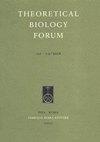Estimation of the effect of surrogate multi-omic biomarkers.
IF 1.2
4区 生物学
Q4 BIOLOGY
引用次数: 2
Abstract
Multiple technologies which measure the same omics data set but are based on different aspects of the molecules exist. In practice, studies use different technologies and have therefore different biomarkers. An example is the glycan age index, which is constructed by three different ultra-performance liquid chromatography (UPLC) IgG glycans, and is a biomarker for biological age. A second technology is liquid chromatography- mass spectrometry (LCMS). To estimate the effect of a biomarker on an outcome variable, two issues need to be addressed. Firstly, a measurement error is needed to map one technology to the other one using a calibration study. Here, we consider two approaches, namely one based on the chemical properties of the two technologies and one based on the estimation of this relationship using O2PLS. Secondly, the use of an approximation of the biomarker in the main study needs to be taken into account by use of a regression calibration method. The performance of the two approaches is studied via simulations. The methods are used to estimate the relationship between glycan age and menopause. We have data from two cohorts, namely Korcula and Vis. In conclusion, (1) both measurement error models give similar results and suggest that there is an association between the glycan age index and the menopause status, (2) the chemical mapping approach outperforms O2PLS in the low measurement error variance, while on the larger measurement error variance, O2PLS works better, (3) statistical efficiency is lost due to increased noise level by adding irrelevant information.替代多组学生物标志物作用的评估。
存在多种测量相同组学数据集但基于分子不同方面的技术。在实践中,研究使用不同的技术,因此具有不同的生物标志物。一个例子是聚糖年龄指数,它由三种不同的超高效液相色谱(UPLC)IgG聚糖构建,是生物年龄的生物标志物。第二种技术是液相色谱-质谱法(LCMS)。为了估计生物标志物对结果变量的影响,需要解决两个问题。首先,使用校准研究将一种技术映射到另一种技术需要测量误差。在这里,我们考虑两种方法,即一种基于这两种技术的化学性质,另一种基于使用O2PLS对这种关系的估计。其次,需要通过使用回归校准方法来考虑在主要研究中使用生物标志物的近似值。通过仿真研究了这两种方法的性能。这些方法用于估计聚糖年龄与更年期之间的关系。我们有来自两个队列的数据,即Korcula和Vis。总之,(1)两个测量误差模型给出了相似的结果,并表明聚糖年龄指数与更年期状态之间存在关联。(2)化学作图方法在低测量误差方差方面优于O2PLS,而在较大的测量误差方差上,O2PLS效果更好,(3)由于添加了不相关的信息而增加了噪声水平,从而损失了统计效率。
本文章由计算机程序翻译,如有差异,请以英文原文为准。
求助全文
约1分钟内获得全文
求助全文
来源期刊

Theoretical Biology Forum
Agricultural and Biological Sciences-General Agricultural and Biological Sciences
CiteScore
1.10
自引率
0.00%
发文量
0
 求助内容:
求助内容: 应助结果提醒方式:
应助结果提醒方式:


